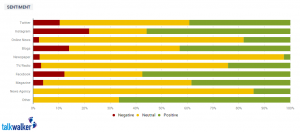There is no such thing as a one-size-fits-all management style, especially when you are leading an employee base more diverse than ever before. The workforce is growing older and younger at the same time as Baby Boomer’s plan their retirement exit and Generation Z take their first jobs. Four generations – Baby Boomers, Generation X, Millennials and Generation Z – now work within the same business environment, making managing such a diverse group of talented individuals challenging. Now business leaders must adapt to create a harmonious culture that benefits their organization’s bottom line.
In order to cultivate a workplace environment in which your employees can work together to make your organization stronger you must first focus on adjusting your management style to address the needs of each generation. According to Leigh Branham, author of 7 Hidden Reasons Employees Leave, people are four times more likely to quit their job because of something going on in the office than for another work opportunity. The top reason people leave their jobs is “loss of confidence and trust in senior leaders, says Branham, even though most managers believe pay is the primary reason employees jump ship. People don’t leave companies; they leave managers.
As management plays a critical role in employee performance, managers must adapt to identify with the changing employee base now spanning several generations. “A Guide to Leading the Multigenerational Workforce” created by MBA@UNC, UNC Kenan-Flagler Business School’s online MBA program, and based on a white paper by UNC Kenan-Flagler Executive Development provides actionable steps employers can take to change their management style to more effectively lead multiple generations in a challenging business environment.
Among the tips the guide offers are:
- Deliver information to each generation through their preferred form of communication. For example, Generation X wants information delivered informally whereas Millennials want opportunities to provide feedback.
- Be flexible with your management styles. There are some generations that prefer a hands-off management style while others want an involved manager.
- Create programs that encourage generations to share knowledge. Let them know it is OK to work together, as collaboration is vital to the success of your organization.
- Recognize and reward employees with incentives that matter to them. Determine what inspires and turns off each generational group to better develop effective recognition and reward programs.
- Build diverse teams. Teams of all ages, gender and cultures will learn to value and trust each other.
Learn more about how to manage a multigenerational workforce by downloading MBA@UNC’s “A Guide to Leading the Multigenerational Workforce.”
Business & Finance Articles on Business 2 Community(25)
Report Post



